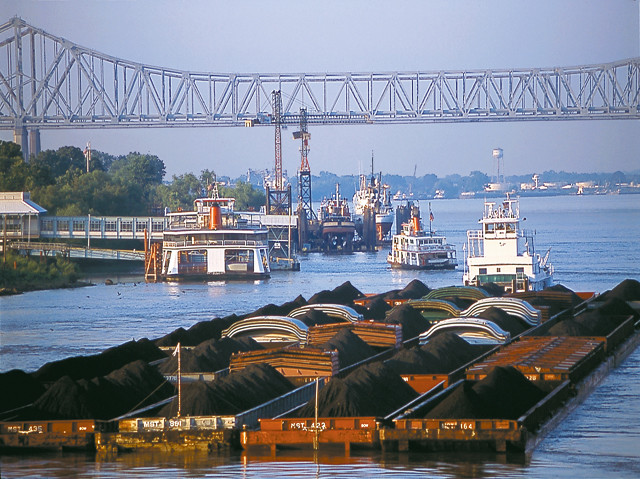This fall’s expected robust grain harvest could be a challenge for the dry barge industry, as availability of hopper barges has been squeezed by a spike in demand for coal and other commodity movements, and operators struggle to fill openings and hold on to workers in a tight labor market.
During the pandemic and the recovery, some barges have been repurposed to haul other commodities. Meanwhile, some equipment must be moved to grain producing areas from locations where they were repositioned during the pandemic-induced barging slowdown.
Although the USDA has revised downward earlier forecasts for grains like soybeans and corn, mostly due to the summer drought conditions, the harvest is expected to be especially strong in states that move crops along the nation’s river system.
Corn acreage in Illinois, Indiana and Ohio are projected to produce record yields, according to River Transport News, which cited USDA data that corn production in river states will increase by 4.5%. Meanwhile, Illinois, Indiana, Ohio and Mississippi are expected to have record yields of soybeans, increasing 6.2% this year. Demand has been strong for export grain this year and it is expected to continue through the fall.
This comes at a time when hopper barges are in short supply as they respond to a surge in demand to move commodities needed for the pandemic recovery, most specifically coal for export and domestic use, raw materials for steel production and limestone. Fueling this surge are high natural gas prices, which make coal more competitive in the energy market, and consistent demand from China for U.S. grains.
“Barge operators report that coal shipments to the power generating sector have been running at levels not seen for the past several years,” RTN said.
In response to demand, many barge operators have been stacking covers on covered hopper barges and using them for open hopper commerce. More than 800 covered hopper barges have been moved into open hopper service to transport coal, petroleum coke, steel raw material and limestone, according to an informal survey of operators by RTN. The shift has been significant, RTN said, adding that regardless of the actual number of covered barges now operating, “the current dynamics of the open hopper market will make the upcoming 2021 fall harvest an interesting season for both shippers and carriers alike.”
Contributing to the tight barge market is the shrinking of the number of hopper barges, both open and covered, due largely to high scrap prices. “Market observers indicate that scrap values for a generic jumbo hopper barge are at or near $90,000,” according to RTN, leading some operators to scrap barges even when they have several more years of life.
At Ingram Barge, the challenge isn’t so much having enough available equipment to meet grain demand this fall - officials don’t foresee a shortage of barges for grain and expect their covered barges to be fully utilized - as it is having enough personnel to man the vessels.
“This is driven by the competitive labor market,” said Oscar Harrell, vice president, vessel operations in Ingram’s office in Paducah, Ky. “We’re no longer competing with other towboat companies, we’re now experiencing workers coming off the river completely and going into construction, factories or retail and earning about the same amount of money as they were on a towboat. Being on a boat for 28 days has its drawbacks for many.”





